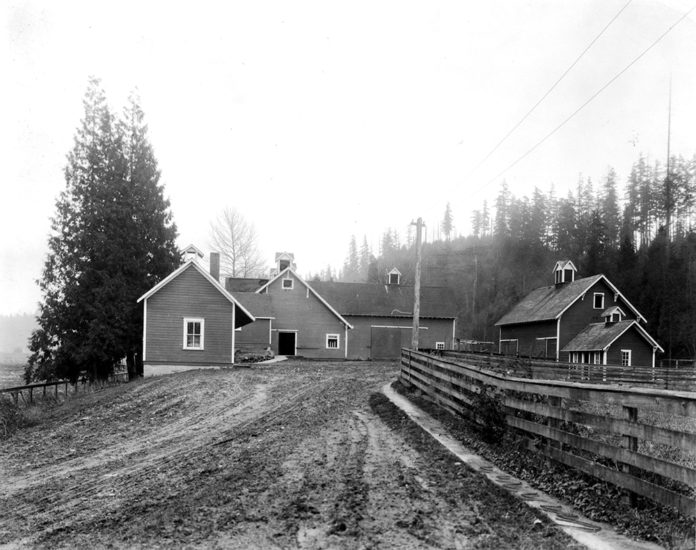When this photo was taken in December 1920, Robert J. Elliott operated one of the most modern dairy farms in the area. Located near the intersection of SR 169 & 140th Way S.E., R.J. Elliott designed and built the state-of-the-art milk house shown here next to the granary. A milk house is structure used to isolate fresh milk from the smells, dust, and microbes of a barn environment. A granary is a storehouse for threshed grain or animal feed. These structures were built on a slight rise in the lower reaches of the Cedar River east of Renton.
Elliott assembled 213 acres of pastureland from money he earned as a carpenter rebuilding Pioneer Square after the Great Seattle Fire of 1889. The fertile Cedar River valley provided the perfect locale for dairying as a growing King County population demanded fresh milk and cheeses. These were the days before economical refrigeration, when marketing perishable food products was purely a local undertaking. Today’s dairy shelves are filled with products from across the country and throughout the world, but not so before modern transportation and refrigeration.
In the Oct. 2006 issue of the Renton Historical quarterly, Elizabeth Stewart provides a detailed history of R.J. Elliott and his model farm. “Elliott plunged wholeheartedly into farming, according to the most up-to-date scientific principles.” The farm buildings incorporated new concepts such as concrete floors, running water, flyproof ventilation, and feeding systems. It’s said that R.J. patterned these structures after the barns and farmhouses of his eastern Ontario, Canada childhood.
The Elliott farm was featured in a double-page spread in the Jan. 1, 1921 Seattle Sunday Times and again in the Feb. 24, 1929 Seattle Daily Times under the headline, “Where Bigger and Better Farms Are Made.” A train stop on the Pacific Coast Railroad between Black Diamond and Renton even named the nearby landing platform Elliott station. This photo comes courtesy of JoAnne Matsumura, an Issaquah historian and concludes this three-part series about the Elliott homestead.







